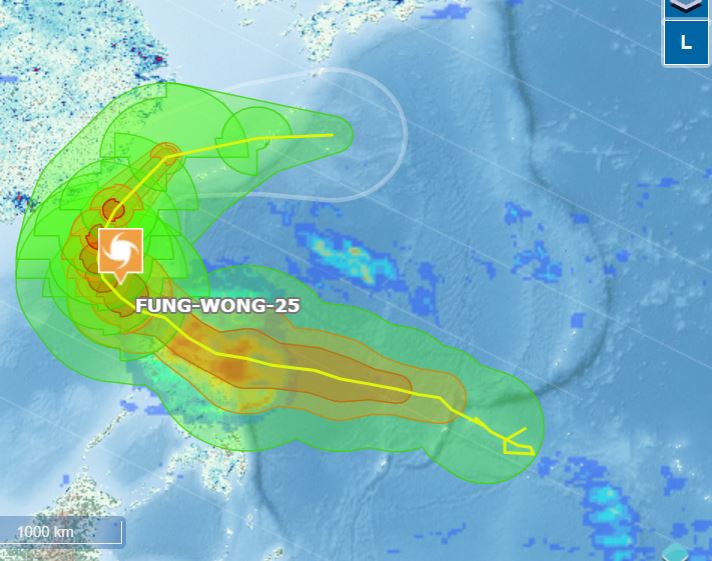Taiwan has evacuated more than 3,000 residents and issued a warning as Typhoon Fung-wong approached from the South China Sea, after the storm killed at least 18 people and displaced over a million in the Philippines.
The storm, which weakened after making landfall in northern Luzon as a super typhoon on Sunday, is expected to reach Taiwan’s southwest coast near Kaohsiung on Wednesday before moving eastward across the island, according to Taiwan’s Central Weather Administration.
Fung-wong is expected to weaken further as it moves across Taiwan, though forecasters warn of “torrential rains and strong winds” along the island’s eastern and southern regions. The storm is not expected to directly impact Hsinchu, home to major semiconductor firms including TSMC.
President Lai Ching-te urged residents to stay away from mountains, coasts and other high-risk areas.
“Please avoid dangerous places and follow government advisories,” he wrote on Facebook.
Authorities have ordered evacuations in four counties, including Guangfu in Hualien, where floods from a previous typhoon in September killed 18 people.
Schools and offices were closed in Hualien and neighbouring Yilan on Tuesday, while emergency crews prepared for potential flooding and landslides.
Fung-wong, known as Uwan in the Philippines, packed sustained winds of 185kmph when it tore through the northern and central provinces over the weekend, triggering floods, landslides and power outages.

Officials said more than 1.4 million people had moved into evacuation centres or relatives’ homes before landfall, with at least 240,000 still displaced.
At least 18 people died due to flash floods, landslides, exposed electrical wires, and a collapsed house in the provinces of Catanduanes, Eastern Samar, Nueva Vizcaya, Mountain Province, and Ifugao, disaster-response and provincial officials said.
The storm destroyed more than 4,000 homes and flooded over 130 villages across northern Luzon, including areas where residents were forced onto rooftops to escape rising waters.
“While the typhoon has passed, its rains still pose a danger in certain areas in northern Luzon, including in metropolitan Manila,” Bernardo Rafaelito Alejandro IV of the Office of Civil Defence said. “We’ll undertake today rescue, relief and disaster-response operations.”
Philippine president Ferdinand Marcos Jr declared a state of emergency following the devastation from both Fung-wong and last week’s Typhoon Kalmaegi, which left over 230 people dead.
The Philippines is hit by about 20 typhoons and storms each year. The country also has frequent earthquakes and has more than a dozen active volcanoes, making it one of the world’s most disaster-prone countries.
Additional reporting by agencies.







